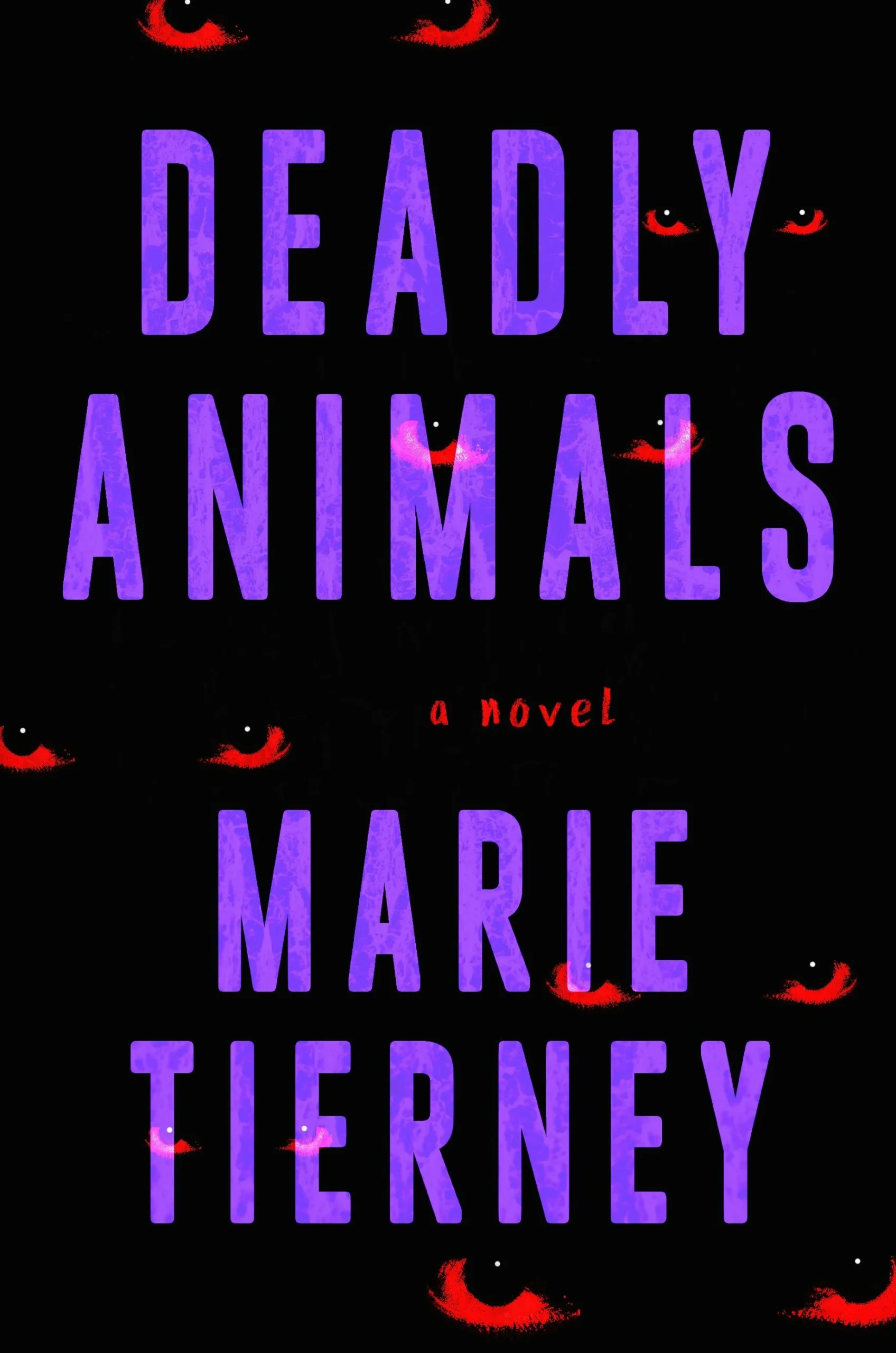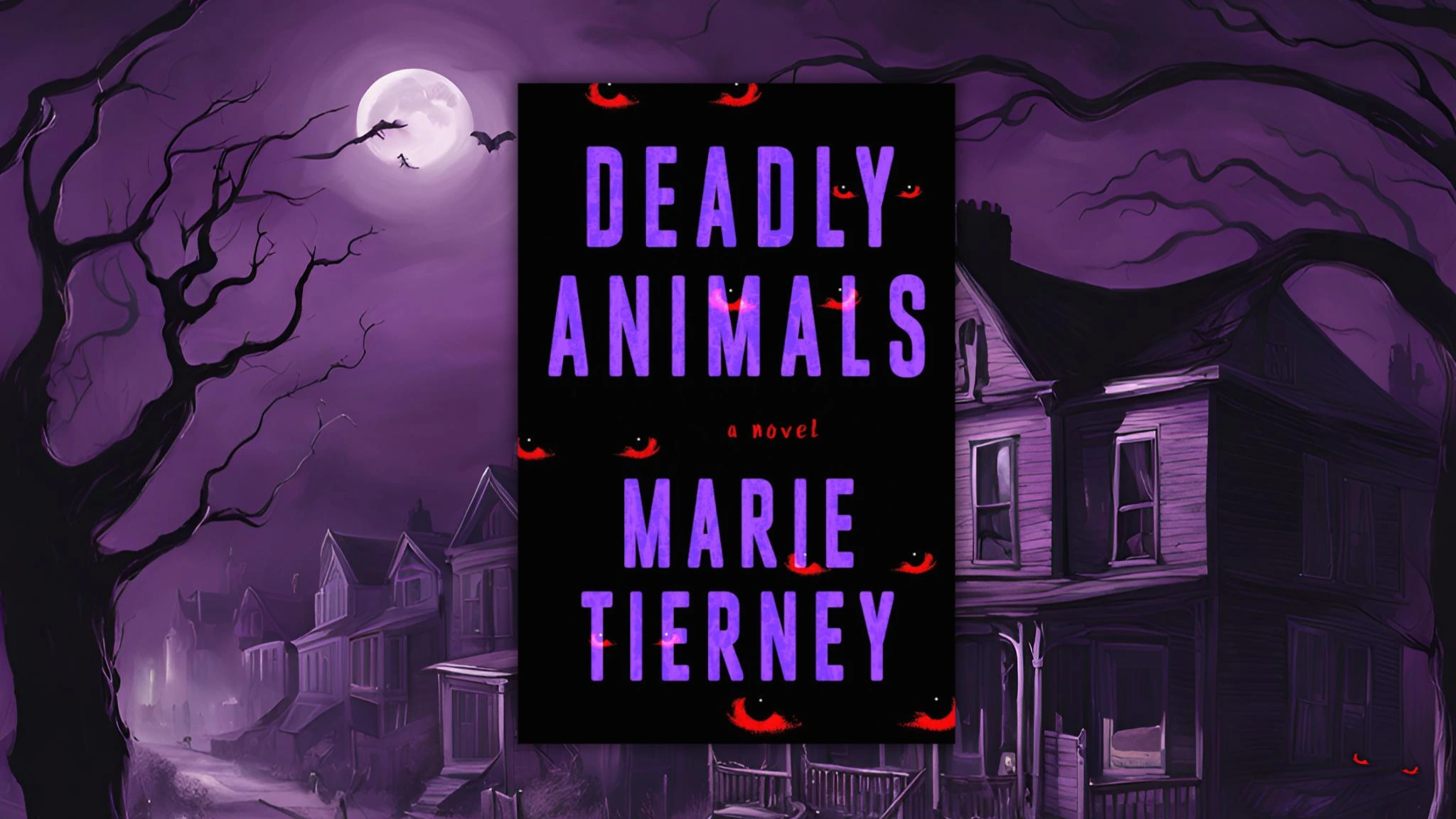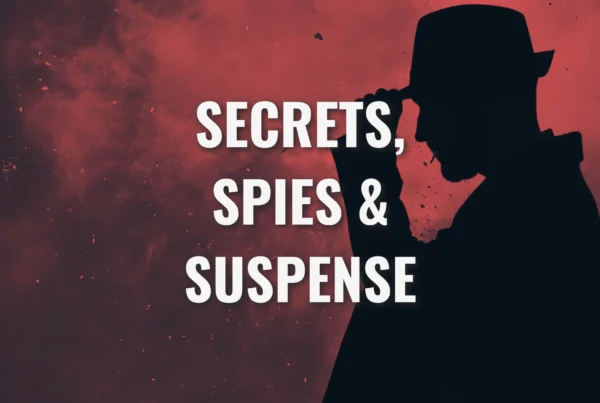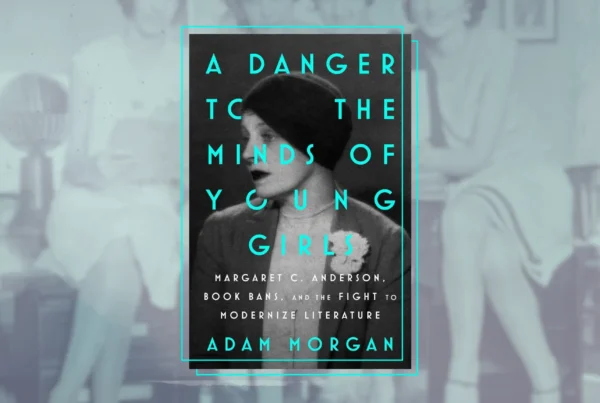Deadly Animals by Marie Tierney
“When everything was drenched in sleep, Ava knew it was time. She eased out of bed, and when her feet touched the floor she became still … The trick at night was to banish all thoughts and let instincts govern. She must be stealthy and quick: the Small Hours were called small with good reason.”
Ava Bonney, fourteen years old, living in the town of Rubery, South Birmingham, England, May 1981. She has an omnivorous intelligence, soaking up facts, drawing her own conclusions, keeping them to herself. Tonight, she is on her way to a secret road-kill body farm she has set up, where she will observe and take notes about a fox she found two weeks ago. Soon, it will be time to bury it, to return it to nature, but in the meantime, there is much to learn.
Only this time, she will learn much more than she bargained for. The body of a dead boy is there, too.
Marie Tierney’s Deadly Animals features one of the most engaging and unlikely heroines you’re likely to find, a girl who knows that to survive in her troubled family and town means keeping secrets, hiding her light. Only two people have some sense of her true self: her best mate John, who worries that she knows too much — “She had instincts and intuitions that most grown-ups lacked … It was sometimes like sharing space with a feral creature” — and Detective Sergeant Seth Delahaye, the man she calls anonymously to report the body, using a fake voice, the one she thinks of as Mrs. Poshy-Snob.
Delahaye has cause to interview her during his investigation of the body, and there is something about Ava that sets her apart, the things she knows, the way she speaks in full sentences. His sense is further confirmed when her instincts lead them to the killing ground, an abandoned farm. But even that gives no clue as to what is about to happen.
The dead body, marred by bite marks, is a classmate of Ava’s, a little-loved bully named Mickey Grant, who’d gone missing two weeks before. Suspicions immediately fall on the town’s convicted pedophile, but he has an alibi, so fingers point, in one direction, and then another … and then another boy goes missing. And once again, it is Ava who stumbles upon him:
“Ava could not believe Fate would call on her twice for the same horrifying job. To find a human body was one thing — but to find two? It should be impossible, and it wasn’t fair.
“Yet here she was.”
Now it is more than finger-pointing, it is rampant fear, a town feeding upon itself. Bite marks are found on this body, too. There are rumors of a wild creature in the woods. Search parties form, which become mobs. A house is set ablaze.
In desperation, an uneasy partnership springs up between Ava and John and the policeman, a sense that only by joining forces can all of this be brought to the end. But the end, when it comes, will be like nothing they could have imagined. Well, maybe Ava …
Deadly Animals is an extraordinary book, both chilling and heartbreaking, a story of horror and resilience that burrows deep into the human mind. “The idea came from my own childhood,” says Tierney, “how I was as a young girl with her macabre hobbies and interests, an obsession with true crime and criminal history, and a great love of the area in which I was raised. It evolved quickly from those first 1,000 words when the protagonist, fourteen-year-old Ava Bonney, discovers her first dead human body while observing her road-kill body farm subjects.
“Ava is based on me, my entire skill set, my world view at that age at that time in that place. I made her older than I had been in 1981 because I had the sequel in mind quite early and it made sense to do so, but Ava is essentially a heightened version of myself. Her family is my family, but the cast of characters consists of amalgamations of people I knew at that time. It is semi-autobiographical and it has been difficult to return to those difficult experiences, but it has been cathartic, too. I wanted to write from an authentic, lived-in honesty, and I could only do that by basing it from a point of view that I understood completely: that of a quirky, curious girl who possessed an eclectic skill-set while enduring a difficult home and school life, and who was always alone but never lonely.”
That personal touch extends to her research:
“I have studied taxonomy since I was a little girl. I was a very bright and curious child, and I learned how to read and write very early, which is why I hold my pen/pencil in the way I do. I am an autodidact, and I learn because I love learning. Reading was my escape from difficult times in my life, as well as writing and drawing. I carry the information with me all the time, and I update this knowledge constantly. I have a good memory, and I own reference books on those specific subjects of police history, taxonomy, criminal history, etc. Where I go, my library goes with me.”
Other sources and influences were helpful, too:
“The Rubery Past Facebook page supplied me with great photographs taken of the places and institutions from that time. I have excellent recall, but if I needed specific history about a building, then I would ask the site’s members, and they would give me the information I needed.
“A specific real-life historical case in 1603 inspired the story, as well,” she adds. We won’t mention it, so as not to give away any of the plot. “I discovered it while reading an anthology of real-life ‘monster’ cases as a child. This, plus the fairy tale “Little Red Riding Hood,” melded with the fantasy children’s tale Where the Wild Things Are by Maurice Sendak.
“Early influences I should mention were Stephen King, Angela Carter, and Joyce Stranger; then, as I became a young woman, Fyodor Dostoevsky, Margaret Atwood, Thomas Harris, and Lynda La Plante. All my favorite authors from many genres have all played a part in inspiration, technique, and storytelling, but these are the frame by which I measured development of my own writing style.”
She expands on that technique: “I keep notebooks where I write all my work in longhand first — paragraphs and chapters before I write them on the computer. I use longhand as a way of keeping my thoughts disciplined and so that the descriptions are written almost as poetry. I write all the dialogue as a script, as if it was a play, especially if there is anything technical or scientific being explained, then I read it aloud in the different voices and accents until it sounds natural. If I have difficulty picturing a scene, I will sketch it in the notebooks, quickly, almost as a doodle. Then I describe it. I write longhand in the morning, then edit in the afternoon and, if happy, type it on the computer. With Deadly Animals, I found that the book was becoming overly long in first draft, so I wrote the ending and the epilogue, then wrote back to where I could comfortably call the middle! It helped so much.”
It had never been Tierney’s plan to write that first draft, though, or any draft:
“In spring 2019, I entered The Daily Mail First Novel Competition, sending in, as stipulated, the first 1,000 words of a prospective novel, as well as a 1,000-word synopsis. I then promptly forgot about it, because I was in a very stressful job that was making me very unhappy, as well as other factors that took all my focus at the time.
“Then, a few days before the results of the competition were released in the newspaper in the autumn, one of the judges, a top literary agent, telephoned me at home and told me I was short-listed for the prize. He said that he also wanted to represent me because he loved the first 1,000 words and where was the rest of the novel? I said, ‘Huh?’! I hadn’t even contemplated the rest of a novel, because I never thought the tale of a strange teenaged girl helping the police find an even stranger serial killer would ever attract positive attention.
“So, I set to work. Then, I sent in the finished manuscript to my agent, who loved the book and then set it up for auction, and it was bought by Bonnier! My editor then suggested to me to turn the book from just a whydunit? into a whodunit? And I was up to the challenge. I think it’s a better book as a result of this suggestion. I think I’m one of the few authors who not only had an agent approach the writer instead of vice versa, but a writer who has also never experienced a rejection. This isn’t a boast, but it is very special to be part of that special group.”
Coming up, as she’s indicated, there will be a sequel: “It is set in 1985, and Ava is set to confront her most dangerous adversary yet. I think it’s even darker than Deadly Animals!”
We have been warned!
About Marie Tierney:
 Marie Tierney was a finalist in The Daily Mail First Novel competition., and he debut novel, Deadly Animals, was selected by best-selling crime author Peter James as his winner.
Marie Tierney was a finalist in The Daily Mail First Novel competition., and he debut novel, Deadly Animals, was selected by best-selling crime author Peter James as his winner.
She cites Richard Adams, Margaret Atwood, Angela Carter and Stephen King among her literary influences. When she isn’t researching criminal history, she writes plays poetry, and creates art in different mediums.
Born and raised in South Birmingham, Marie held various jobs in four counties and dedicated almost twenty years to working in education before becoming a full-time writer.
She now lives in The Fens with her husband and son.






